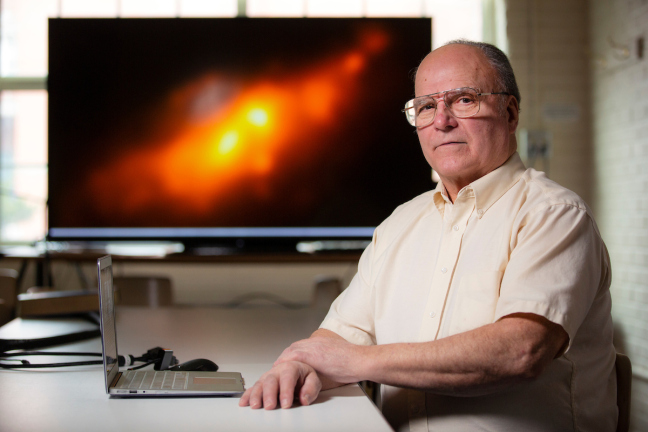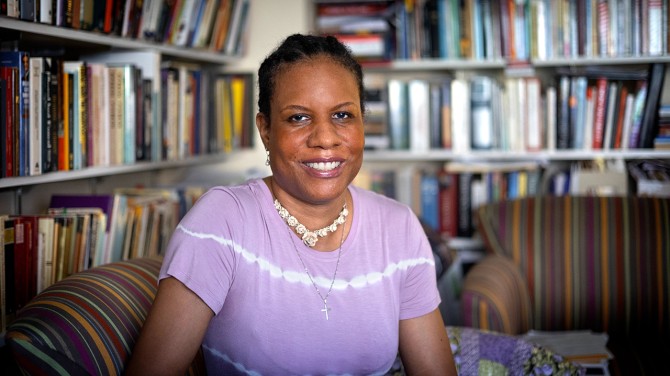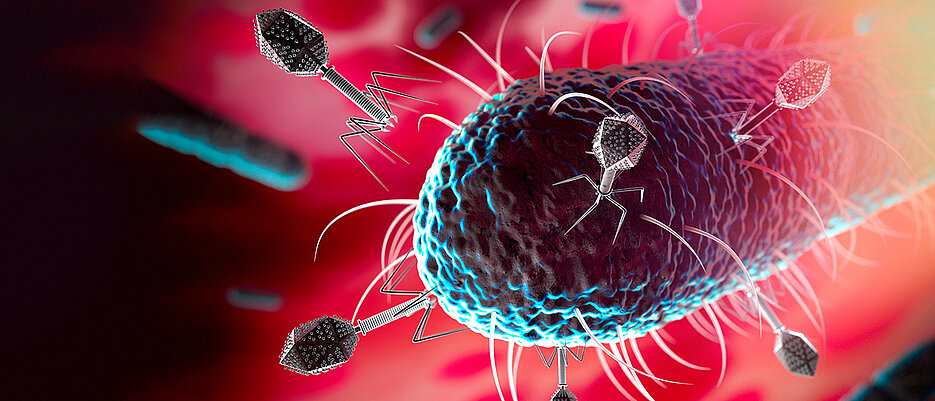Allen Lawrence, a 77-year-old who earned an Iowa State master’s degree in astrophysics in 2018, is first author of a paper revealing a rare double-nucleus structure in a well-known, nearby galaxy. Larger photo. Photo by Christopher Gannon.
AMES, Iowa – Allen Lawrence, wrapping up a long career as an electrical engineer, was serious about moving his astronomy hobby beyond the 20-inch telescope he’d hauled to star parties under the dark skies of Texas and Arizona.
So in 2011 – in his late 60s, after 30 years of operating his own consulting firm around Green Bay, Wisconsin – he enrolled in some courses at the University of Wisconsin-Madison. It wasn’t long before he went around Sterling Hall asking about joining a research team.
Jay Gallagher, now the W. W. Morgan & Rupple Bascom Emeritus Professor of Astronomy at Wisconsin, offered Lawrence the chance to study one of two galaxy systems. Lawrence picked a nearby system studied since the 1960s and featuring the interaction of two galaxies, a larger one known as NGC 4490 (nicknamed the “Cocoon Galaxy” because of its shape) and a smaller one known as NGC 4485. The system is about 20% the size of the Milky Way, located in the Northern Hemisphere and about 30 million light years from Earth.
After taking a look at some infrared images from NASA’s Wide-field Infrared Survey Explorer, Lawrence said it looked like the larger galaxy had a rare double nucleus. One nucleus could be seen in visible wavelengths, the other nucleus was hidden in dust and could only be seen in infrared and radio wavelengths.
Well – after years of study, including earning an Iowa State University master’s degree in 2018 and continuing to work with Iowa State astronomers – Lawrence, at 77, is the first author of a paper revealing the NGC 4490 galaxy does, indeed, have a double nucleus. The paper is now online and has been accepted for publication by the Astrophysical Journal.
Co-authors of the paper are Iowa State’s Charles Kerton, an associate professor of physics and astronomy; and Curtis Struck, a professor of physics and astronomy; as well as East Tennessee State University’s Beverly Smith, a professor of physics and astronomy.
“I saw the double nucleus about seven years ago,” Lawrence said. “It had never been observed – or nobody had ever done anything with it before.”








